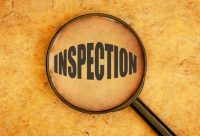What Is an EHS and Why Would I Want to Know?
The CAA’s Chemical Accident Prevention Program requires that any facility that has listed substances above threshold quantities in any single process prepare a Risk Management Plan (RMP). The listed substances contain 77 toxic chemicals with thresholds ranging from 500 pounds (lb) to 20,000 lb and 63 flammable substances with a threshold quantity of 10,000 lb. […]










